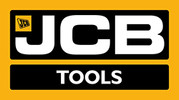What’s the difference between Continuous vs. Segmented Diamond Blades
Posted by JCB Tools on 8th Jan 2025
What’s the difference between Continuous vs. Segmented Diamond Blades ?
AUTHOR JCB TOOLS / CATEGORY BUYING GUIDE / PUBLISHED: January-08-2025
Diamond blades are indispensable tools across industries like construction, masonry, and fabrication. Designed to cut through hard materials such as concrete, stone, tile, and ceramics, these blades come in two primary types: continuous rim and segmented. Understanding their differences is essential for achieving optimal performance in your projects. In this JCB Tools blog post, we’ll break down the characteristics, advantages, and applications of both blade types, and explore critical factors like grit size, diamond concentration, and blade specifications
Continuous rim diamond blades, often referred to as wet cutting blades, feature a smooth, unbroken edge embedded with diamond particles. Their solid design ensures a clean, precise cut, making them ideal for delicate materials like ceramic tiles, porcelain, and glass.
Key Features:
-
Smooth Finish: Continuous rim blades excel in providing polished, chip-free cuts.
-
Wet Cutting: Designed for use with water, they stay cool, lubricated, and free of debris, which helps prolong the blade's life and improves cutting precision.
Applications: These blades are commonly used for fine, intricate work where precision is critical, such as tile installation or stone fabrication.
What Are Segmented Diamond Blades?
Segmented diamond blades have a rim with gaps or slots between diamond-embedded segments. These slots enhance performance by dissipating heat and removing debris during cutting, making segmented blades ideal for tougher materials and high-intensity tasks.
Key Features:
-
Durability: Built to handle heavy-duty applications and long cutting sessions.
-
Versatility: Suitable for dry cutting, though they can also be used for wet applications when necessary.
-
Applications: Perfect for cutting concrete, asphalt, brick, and other dense materials, particularly in outdoor or industrial settings.
Key Factors When Choosing a Diamond Blade
Selecting the right diamond blade requires considering several crucial factors to match the blade to the material and job requirements.
-
Material Compatibility:
Different blades are optimized for specific materials. For instance, continuous rim blades are better for delicate surfaces like ceramic, while segmented blades are ideal for harder, rougher materials like concrete or asphalt. -
Blade Diameter:
The blade size determines the depth of the cut. Larger blades are used for deep, heavy-duty cuts, while smaller blades are preferred for precision work. -
Arbor Size:
Ensure the blade's arbor matches your tool’s arbor size to avoid improper fitment or safety hazards. -
Speed Rating:
Every blade comes with a maximum speed rating. Always ensure your tool operates within this limit to maintain safety and avoid damaging the blade.
Understanding Grit Size and Diamond Concentration
Grit Size:
The grit size refers to the size of diamond particles embedded in the blade.
-
-
Larger grit sizes result in aggressive cuts suitable for hard materials.
-
Smaller grit sizes provide a smoother finish for precise work.
-
Diamond Concentration:
Diamond concentration measures the density of diamond particles in the blade's rim.
-
-
High-concentration blades are efficient and durable, ideal for cutting hard materials.
-
Low-concentration blades work well for softer materials or lighter tasks.
-
Choosing the Right Tool for the Job
To determine whether a continuous rim or segmented blade is best for your needs:
-
Choose Continuous Rim Blades for wet cutting of delicate materials that demand a clean, smooth finish.
-
Choose Segmented Blades for dry or wet cutting of hard, abrasive materials and for applications where speed and durability are paramount.
Selecting the right diamond blade is about matching the blade's characteristics to your job's requirements. By understanding the differences between continuous rim and segmented diamond blades, along with factors like grit size and diamond concentration, you can ensure efficient, precise results every time. Whether you’re tackling intricate tilework or heavy-duty concrete cutting, the right blade will not only enhance performance but also extend the life of your tools.
At JCB Tools, we’re committed to providing professionals with high-quality diamond blades that meet every cutting need. Explore our range of diamond tools to find the perfect fit for your next project!
We hope you’ve found these tips helpful and remember: if you need any further advice, our team of experts is on-hand to help you, so just get in touch! If you have any questions please visit www.jcb-tools.co.uk/contact-us For expert advice or any questions you may have, you can give us a call on 01646 687 880, fill out the contact form here or drop us a message on any of our social media pages - Facebook, Instagram or Twitter.

